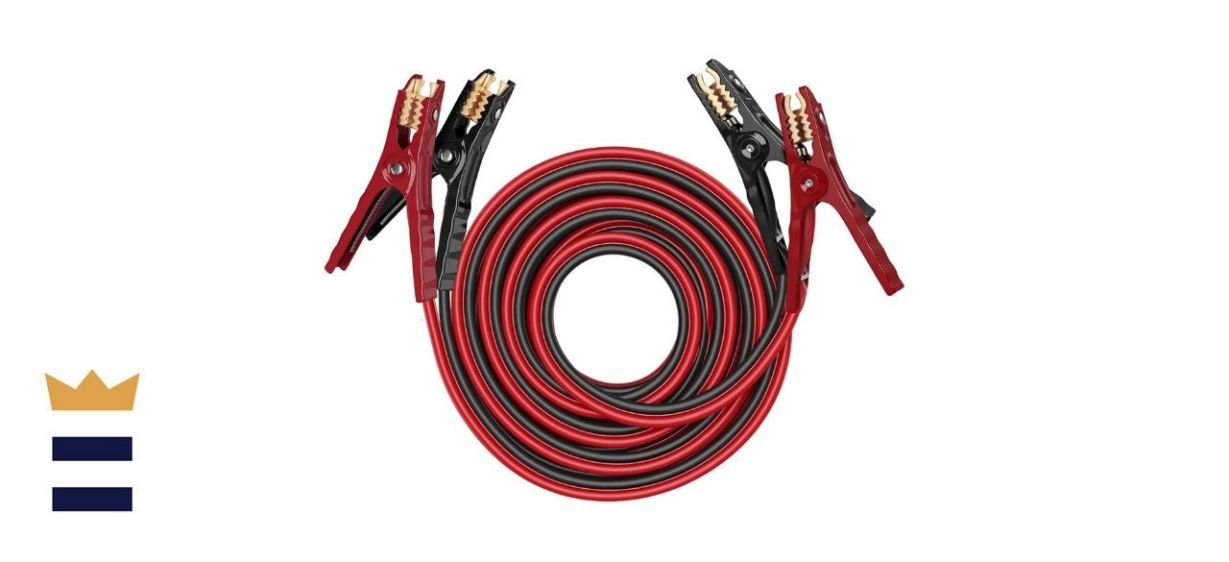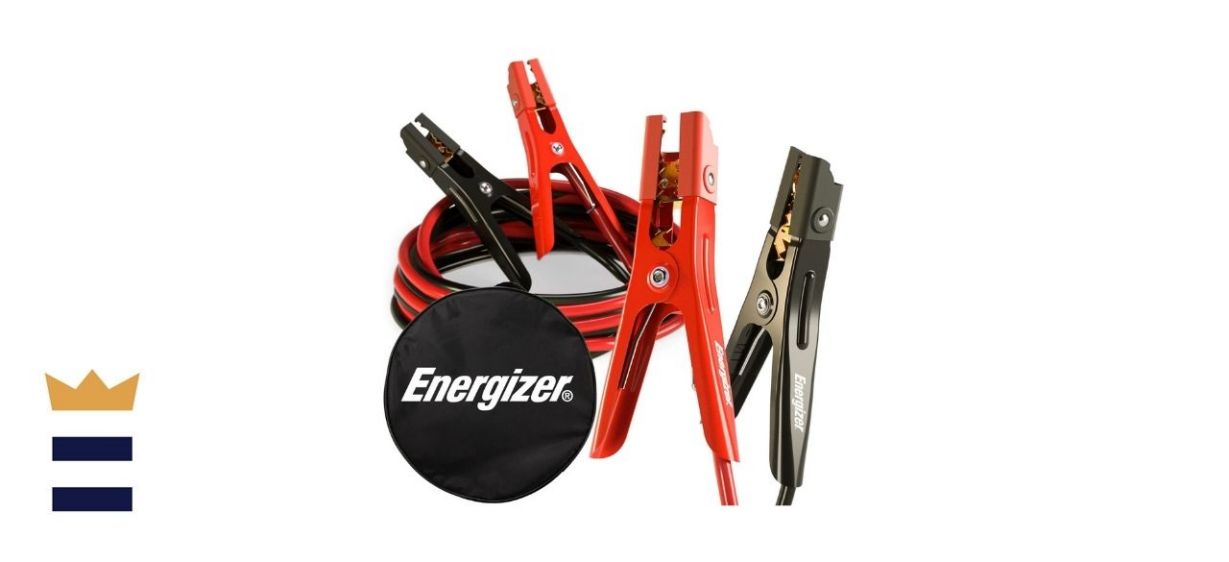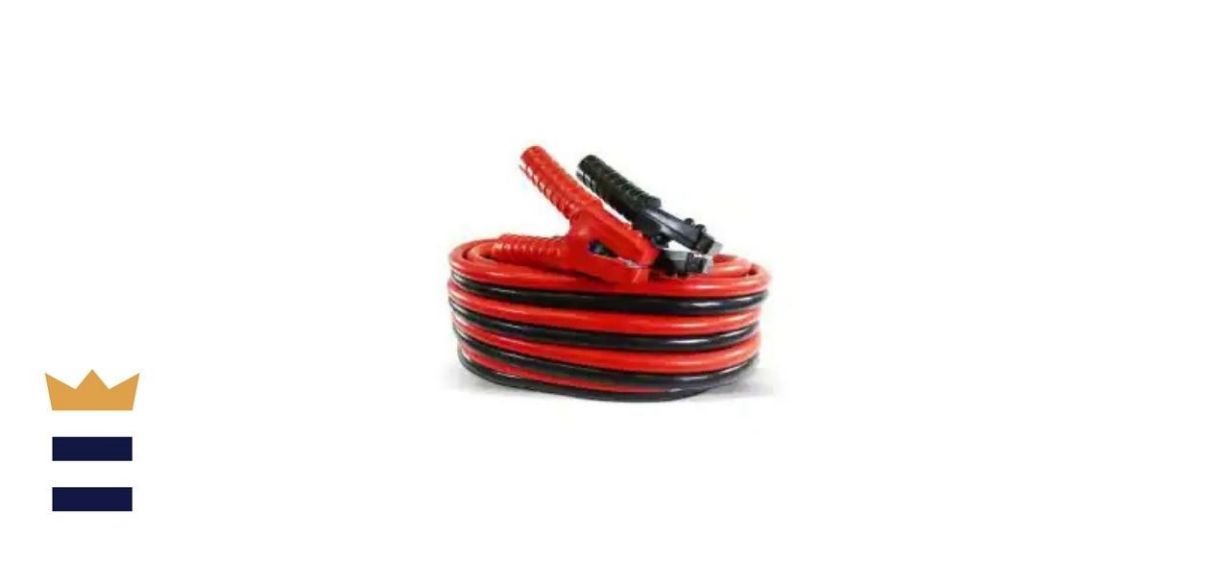Which jumper cable is best?
A dead battery can leave you stranded on the side of the road for hours. Not only do you have to call for a boost (and change your plans), you’re also exposed to the elements and dangerous traffic. And that’s assuming you have cell service.
This is why every driver should have a set of jumper cables in the back of their car. This inexpensive tool can let you take matters into your own hands and get on your way in minutes. Whether you’re jumping a car, truck or SUV, the best jumper cables are Thikpo G420 Jumper Cables.
What to know before you buy jumper cables
What jumper cables are
Jumper cables are cables that connect to your car battery to deliver a charge. There is a positive and negative cable, and clamps on either end of each cable. These clamps attach to your battery’s positive and negative terminals at one end, and a fully juiced battery in a running car at the other end.
What jump-starting a car is
Jump-starting a car is a method of battery revival that requires another car to perform. Also called a boost, this procedure gets your car running again if your battery has discharged to a voltage level beneath the starting threshold. When done correctly, a jump-start gives just enough juice for the starter to crank the engine. Your alternator will continue charging the battery so long as you don’t shut the car off.
How to use jumper cables
Jumpstarting a car is quick and easy when performed safely.
- Start by lining up the two cars. Make sure they’re close enough for the cables to reach each battery, but that neither car is touching. Pop the hoods and remove the keys from the ignition.
- Locate the positive and negative leads connecting your car to the battery terminals (positive is usually red).
- Start at the dead battery. Lay the negative clip down on a piece of plastic to avoid grounding out. Then connect the positive clip to the positive terminal of the dead battery. Make sure your alligator clips never touch during this process. You could shock yourself.
- Connect the other two clips to the good battery’s corresponding terminals, starting with the positive clip.
- Returning to the dead battery, take the negative end you left unattached clip and ground it out. This can be done by clamping it to a bare piece of metal or a designated ground spot on the chassis or on a bare-metal bolt on the engine block. Do not connect it to the negative terminal — this could cause a spark and explosion.
- Start the engine of the car with the good battery. Let it run for a couple of minutes.
- After a few minutes have passed, start up the car with the dead battery. If it doesn’t start, run the other car a little longer. If all else fails, you’ll need a new battery.
- Remove the grounded-out negative clamp first. Keep it away from the battery to avoid a spark and ignition. Then remove the positive clamp from the battery you just jumped.
- Remove the positive cable and then the negative cable from the car you used to jump your own.
- Drive your car or let it run for 15-30 minutes to recharge your battery fully.
What to look for in quality jumper cables
Gauge
Gauge describes how thick your jumper cable is. Jumpers are typically 1-12 gauge. The thicker the cable, the lower the number and quicker the charge. Most cars will be fine with a 4-gauge cable. Trucks, RVs and SUVs might need something thicker such as a 1- or 2-gauge cable.
Length
Cable length is critical, because you won’t always be able to jump in optimal conditions. While 10 feet is enough for two cars nose to nose, you’ll want something longer for some flexibility. Length is quickly eaten up by different battery and ground locations. A good minimum is 20 feet, but you can’t go wrong with longer. Just note that as length increases, gauge can decrease as thick cable is expensive. Prioritize gauge.
Amperage
It takes about 200 amps to start your car. But you’ll want cables rated for at least 400 amps. You don’t know how much power the vehicle you enlist for help will put out. This will not only protect your battery, but also prevent your cables from melting.
How much you can expect to spend on jumper cables
The cost of a jumper cable depends on its length and gauge. A standard 4-gauge jumper cable is typically $20-$30. Thicker gauges necessary for larger vehicles run between $50-$100.
Jumper cable FAQ
My car won’t start after a jump but feels like it’s getting close. What should I do?
A. If you’ve jumped your car with the help of a friend or neighbor and find that it’s just on the precipice of starting, but won’t after a few minutes, have the working car rev its engine up to 2,000 rpm. Your helper should hold it at those revs while you try to start your car. This should give you more power to start the bad battery.
What’s the difference between a battery charger and jumper cables?
A. Battery chargers come in a few forms: standard chargers, trickle chargers and jump starters. These require an alternative power source, such as AC wall power, or a lithium battery pack to operate. While a jump starter can boost your vehicle without the help of another, they’re almost four times the cost of cables.
Standard chargers and trickle chargers are used for battery maintenance and storage, and usually cannot restore a battery quickly on the side of the road.
What are the best jumper cables to buy?
Top jumper cable
What you need to know: This is the go-to set of cables, capable of jumping most kinds of vehicles reliably.
What you’ll love: With a 600-amp rating and 4-gauge thickness, there’s a high threshold for what you can jump with this set. They’re 20-feet long, which means you can jump even with your cars parked nose to tail. The set is also available in thicker gauges and in 16-, 25- and 30-foot coils.
What you should consider: If you want a longer cable, you have to get a thicker gauge with this brand.
Where to buy: Sold by Amazon
Top jumper cables for the money
What you need to know: This is a good budget option for owners of compact cars.
What you’ll love: This 6-gauge cable from a trusted battery brand is just thick enough for small cars such as hatches and sedans. At 16 feet, you should have about 10 feet of manipulable cable between vehicles. This cable is good for about 500 amps.
What you should consider: This isn’t a thick enough gauge for powerful engines and big vehicles.
Where to buy: Sold by Amazon
Worth checking out
Energizer 1-Gauge 25-Foot Battery Jumper Cables
What you need to know: These are the cables you should get if you have a large truck, SUV or RV.
What you’ll love: At 1 gauge in thickness, these heavy-duty jumper cables can get some of the largest, most powerful motors running again. They’re rated for 800 amps and are 25 feet long, so you don’t have to go nose to nose. The clamping power of these is top notch as well, giving them an edge over budget cables that can fall off side-post batteries or fail to grasp small bolts.
What you should consider: With durability and reliability comes cost, and these Energizers are almost double the price of the standard 4-gauge cables.
Where to buy: Sold by Home Depot
Sign up here to receive the BestReviews weekly newsletter for useful advice on new products and noteworthy deals.
Karl Daum writes for BestReviews. BestReviews has helped millions of consumers simplify their purchasing decisions, saving them time and money.
Copyright 2022 BestReviews, a Nexstar company. All rights reserved.





